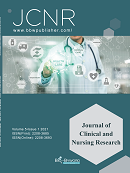Abstract
Tabanus is a traditional Chinese medicine. In recent years, various protein active components derived from the Tabanus salivary gland have been explored, and many promising components were found to have therapeutic effect. The rich active components in its salivary gland have pharmacological effects, such as anti-platelet aggregation, anti-inflammatory, anti-infection, immunosuppression, anti-angiogenic, and anti-tumor effects. This paper summarizes findings from the related articles about Tabanus in recent years with a special focus on its pharmacological effects so as to provide reference for its further development and utilization.
References
Ma D, et al., 2009, Anti-Thrombosis Repertoire of Blood-Feeding Horsefly Salivary Glands. Mol Cell Proteomics, 8(9): 2071-2079.
Xu X, et al., 2008, Toward an Understanding of the Molecular Mechanism for Successful Blood Feeding by Coupling Proteomics Analysis with Pharmacological Testing of Horsefly Salivary Glands. Mol Cell Proteomics. 7(3): 582-590.
Zhai Y, 2007, Studies on the Chemical Constituents of Traditional Chinese Medicine Tabanus. Shenyang Pharmaceutical University.
Jin W, et al., 2000, Extraction and Identification of Anticoagulant Substances from Tabanus. Acta Chinese Medicine and Pharmacology, 2000(03): 58-60.
Jiang B, et al., 1992, Determination of Trace Elements in Five Tabanus Species. Trace Elements, 1992(01): 60-61.
Chen R, et al., 2019, An Immunosuppressive Peptide from the Horsefly Inhibits Inflammation by Repressing Macrophage Maturation and Phagocytosis. J Cell Biochem. 120(8): 14116-14126.
Zhao R, et al., 2009, Immunoregulatory Peptides from Salivary Glands of the Horsefly, Tabanus pleskei. Comp Biochem Physiol B Biochem Mol Biol. 154(1): 1-5.
Li J, et al., 2006, Effects of Diedang Decoction on Uterine Microcirculation and its Analgesic and Anti-inflammatory Effects in Rats. Study Journal of Traditional Chinese Medicine, 2006(02): 251-225.
Zhang Z, et al., 2014, A Potent Anti-Thrombosis Peptide (Vasotab TY) from Horsefly Salivary Glands. Int J Biochem Cell Biol. 54: 83-88.
Rajská P, et al., 2003, Vasodilatory Activity in Horsefly and Deerfly Salivary Glands. Med Vet Entomol, 17(4): 395-402.
Urioste S, et al., 1994, Saliva of the Lyme Disease Vector, Ixodes dammini, Blocks Cell Activation by a Nonprostaglandin E2-Dependent Mechanism. J Exp Med. 180(3): 1077-1085.
An S, et al., 2011, A Novel Allergen Tab y 1 with Inhibitory Activity of Platelet Aggregation from Salivary Glands of Horseflies. Allergy, 66(11): 1420-1427.
Ma D, et al., 2010, A Horsefly Saliva Antigen 5-Like Protein Containing RTS Motif is an Angiogenesis Inhibitor. Toxicon. 55(1): 45-51.
Ma D, et al., 2011, A Novel Family of RGD-Containing Disintegrins (Tablysin-15) from the Salivary Gland of the Horsefly Tabanus Yao Targets ?IIb?3 or ?V?3 and Inhibits Platelet Aggregation and Angiogenesis. Thromb Haemost. 105(6): 1032-1045.
Deng Z, et al., 2020, Disintegrin Tablysin-15 Suppresses Cancer Hallmarks in Melanoma Cells by Blocking FAK/Akt/ERK and NF-?B Signaling. Curr Cancer Drug Targets, 20(4): 306-315.
Deng Z, et al., 2019, The Anticancer Properties and Mechanism of Action of Tablysin-15, the RGD-Containing Disintegrin, in Breast Cancer Cells. Int J Biol Macromol, 129: 1155-1167.
Si M, Lang J, 2018, The Roles of Metallothioneins in Carcinogenesis. J Hematol Oncol, 11(1): 107.
Wei L, et al., 2015, A Potent Anti-Inflammatory Peptide from the Salivary Glands of Horsefly. Parasit Vectors, 8: 556.
Takác P, et al., 2006, Vasotab, a Vasoactive Peptide from Horse Fly Hybomitra bimaculata (Diptera, Tabanidae) Salivary Glands. J Exp Biol, 209(Pt 2): 343-352.
Irie Y, et al., 2004, Expression of Neuronal Growth Inhibitory Factor (Metallothionein-III) in the Salivary Gland. Physiol Res, 53(6): 719-723.
Zeng Q, et al., 2020, Tablysin-15 Inhibits Osteoclastogenesis and LPS-Induced Bone Loss via Attenuating the Integrin ?v?3 Pathway. Chem Biol Interact, 327: 109179.
